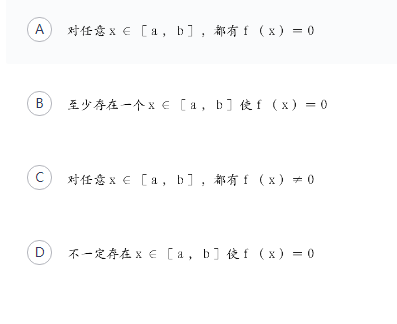当前位置:首页 → 职业资格 → 教师资格 → 中学英语学科知识与教学能力->根据提供的信息和语言素材设计教学方案,用英文作答。设计任务:
根据提供的信息和语言素材设计教学方案,用英文作答。
设计任务:请阅读下面学生信息和语言素材,设计一节英语听说课的教学方案。教案没有固定格式,但须包含下列要点:
· teaching objectives
· teaching contents
· key and difficult points
· major steps and time allocation
·activities and justifications
教学时间:45分钟
学生概况:某城镇普通中学九年级(初中三年级)学生,班级人数40人,多数已经达到《义务教育英语课程标准(2011版)》四级水平,学生课堂参与积极性一般。
语言素材:
Girl 1: Welcome to the English club. Today we're going to talk about the best ways to learn English. Who has an idea?
Boy 1 : Do you learn English by watching English videos?
Girl 2: No. It's too hard to understand the voices.
Boy 1 : What about keeping a diary in English?Do you learn English that way?
Girl 2: Yes. It helps to learn English every day.
Girl 3: Have you ever studied with a group?
Girl 2: Yes, I have!I've learned a lot that way.
Girl 1 : Do you ever practice conversations with friends?
Girl 2: Oh, yes. It improves my speaking skills.
Boy 1 : What about reading aloud to practise pronunciation?
Girl 3: I do that sometimes. I think it helps.
Boy 2: I do too. And I always look up new words in a dictionary.
Girl 3: That's a great idea!
Teaching Contents: It contains a dialogue about the best ways to learn English. It can help students to learn some important sentence patterns. Teaching Objectives :
(1) Knowledge objective
Students can master the sentence patterns: What about ...?Have you ever studied with a group?Yes, ! have.
I've learned a lot that way.
(2) Ability objective
Students can improve their listening and speaking abilities and communicative competence.
(3) Emotional objective
Students can cultivate the habit of joining English club in their school to improve their English skills.
Teaching Key and Difficult Points:
Communicate with others on the topic--"the best ways to learn English freely".
Teaching Methods :
1. Pair work
2. Teaching by explanation
Teaching Aid :
A tape recorder
Teaching Procedures :
Step I Revision (3 minutes)
Check homework. Invite different students to report their discovery of new ways of studying what haven't been introduced in the book or in class.
S1 : My friend Peter likes to listen to music while he studies.
S2: My father used to go to the library where it was very quiet.
S3 : ...
(Justification: The revision will examine students' learning effect and easily lead in the text.)
Step 2 Speaking Practice (12 minutes)
Activity 1 Question & Answer
Ask students some questions:
( 1 ) How do you usually learn English?
(2) Have you ever studied with a group?
(3) How do you learn English?
Guide the students to say.(They are members of an English club that meet after school once a week. They are talking the ways to learn English. )
Activity 2 Pair work
Guide the students to use "What about ..." to make a dialogue, and do the pair work like this:
Boy 1 : What about watching English movies?Do you learn English that way?
Girl 2: Yes. I do that sometimes. I think it helps.
(Justification: This step can develop students' speaking ability and set a happy atmosphere for listening. )
Step 3 Listening (15 minutes)
Firstly, let them listen to the tape recorder and summarize the main idea. Then the teacher asks several students to summarize the main idea of the material.
Secondly, listen to the tape again. At this time, the students should do some exercises, and answer some detail
questions.
Thirdly, ask them to listen to the tape for one more time to check whether they can get the right answers.
(Justification: At this step, not only their ability of listening and speaking but also their skills of listening for specific information will be well developed. )
Step 4 Practice (10 minutes)
Show the tape scripts on the PPT.
Activity 1: Invite a pair of students to read the sample conversation to the class. Correct some of the pronunciation.
Stress out the key vocabulary and sentence structure and ask students to pay attention to those key points.
Activity 2: Divide the class into 5 groups, with each group 10 people. Ask each group to act as the members of English club and discuss the best ways of learning English.
Ask two groups to act in front of the whole class. Give comments, especially appraisals.
(Justification: This activity can make all students participate in the teaching and learning. Through this group work, students can consolidate the usage of the key words and sentence structure.)
Step 5 Summary and Homework (5 minutes)
Summary: Do the summary together with the students. Let them know what they have learned in this lesson.
Homework : Ask students to introduce one of the effective ways of learning English to their partners and to write two sentences with "What about ...? " and two sentences with "verb + by with gerund".
(Justification: Homework is the extension of class and helps them to enhance what they have learned in this class. )
Blackboard Design :
aloud, pronunciation
What about ...?
Have you ever studied with a group?
Yes, I have. I've learned a lot that way.
教师职业道德区别于其他职业道德的显著标志就是( )。
在教育史上主张“不愤不启,不悱不发”的教育家是()。
心理学家所说的“危险期”或“心理断乳期”是指( )。
教育工作中做到“因材施教”、“长善救失”符合年轻一代身心发展的( )。
德育过程与品德形成过程的关系是( )。
德育过程是培养学生( )的过程。
学生从事集体活动、结交好友的场所是( )。
教师的工作目的和使命是( )。
直接决定教育目的的因素是( )。

